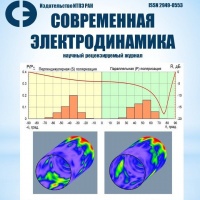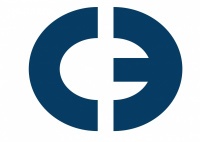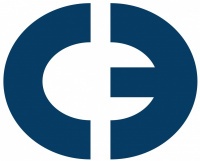
Section 1. Topics on experimental electrodynamics
IMPACT ESTIMATE OF DIFFERENT CEILING RAM ORIENTATIONS ON THE QUIET-ZONE FIELD IN THE COMPACT RANGE
Balabukha N. P., Zubov A. S., Menshikh N. L., Nikitenko A. V., Solosin V. S.
Pyramidal shaped radio-absorbing materials are commonly used in modern anechoic chambers as anechoic covering of the floor, ceiling and walls. Electro-magnetic field reflected from such materials includes Floquet's harmonics - fields propagating in several different directions. These directions depend on frequency, angle of incidence and angle of orientation of the pyramids to the plane of incidence. Different orientations may result in different impact on quiet-zone field. In this article we suggest a method of getting an estimate of this impact and its orientation angle dependence. Three-dimensional diffraction problem with periodic boundary conditions is solved using modified rigorous coupled-wave analysis. Modifications were made to increase numeric stability and efficiency. This strict-solution method allows getting values of the amplitudes of distinct Floquet's modes. Geometrical estimations of the localization of these modes can be made using appropriate expressions for the angles that set directions of propagation for the modes. The impact on the quiet-zone ripple has been estimated using summation of all the Floquet's fields non-evanescent at given frequency.
Key words: radio absorbing material, anechoic chamber, compact range
STUDYING THE SHAPE OF A FILLER OF A COMPOSITE MATERIAL DURING GRANULOMETRIC ANALYSIS, TO EVALUATE THE PERMITTIVITY VALUE
Dolmatov A. V., Maklakov S. S., Garanov V. A., Belyaikov I. N., Petrov D. A., Shiryaev A. O., Osipov A. V., Starostenko S. N.
It is shown that despite the well-established practice in the powder materials industry to apply the laser diffraction method for granulometric analysis of particles, the results obtained in this way may turn out to be inaccurate. Using three model powders differing in particle shape and size, it was shown that insufficient desaggregation using the laser diffraction method overestimates the average particle size by more than 30 % of the true value, which was obtained using electron microscopy. It is also shown that the estimated values of the permittivity, taking into account the nonsphericity of the powder particles, determined on the basis of electron microscopy data, coincide with the experimentally measured values of the permittivity of composites, where the studied powders serve as a filler. This indicates the need for a detailed analysis of the permittivity of composite materials of a statistical analysis of the electron microscopy data of inclusion particles.
Key words: permittivity, mixing formulas, electron microscopy, depolarization coefficients, functional materials
Section 2. Topics on computer simulation in electrodynamics
CHOICE OF THE ELECTROMAGNETIC PROPERTIES OF COATING DEPLOYED OVER INNER SURFACE OF A CONDUCTING CAVITY
Kisel V. N., Kozheko A. S.
It is known that radar visibility of a modern aircraft may be defined by scattering from its cavities, particularly from air intake. Decrease of radar backscattering from an intake can be achieved by means of radar absorbing coating deposited over its inner walls. When doing so one comes across a non-trivial problem of choosing optimal properties of the components of coating because of peculiarities of electromagnetic field propagation along the cavity and associated complex diffraction phenomena. ITAE RAS developed a technique to choose those properties which is based on energy considerations. Namely, the problem of electromagnetic wave propagation over the coated plane was considered and the fraction of electromagnetic power absorbed by the coating was used as a criterion to be maximized while varying the coating properties. One can use the suggested feature, namely, the integral reflection coefficient, to achieve optimal properties of the coating at the required frequency range. The paper deals with further development of that technique to enable optimization of the electromagnetic properties of coating in the specified frequency and angular bands taking into consideration curvilinear boundaries of the cavity. The results of using modified computational model of an intake are presented, now it is possible to obtain integral evaluations of the efficiency of coatings that accounts for the specific features of electromagnetic excitation of different portions of the walls. The results of calculations are discussed.
Key words: diffraction, energy, cavity, radar absorbing coating, reflection coefficient
DIFFUSIVE SCATTERING FROM THE SYSTEM OF METAL TRIANGLES
Lebedev A. M., Furmanova T. A.
Two tasks were solved: firstly, to provide substantially diffusive scattering by a system of metal triangles located above the surface of a metal object, and, secondly, to study the energy characteristics of diffusive scattering from a system of triangles in the frequency band. It is proposed to arrange the triangles obliquely and, if possible, chaotically with respect both to the surface of the object and to neighboring triangles. Orientation of the triangles' sharpened noses in direction of irradiation provides a matched entrance of the incident wave into the region of space occupied by triangles. Being reflected from the inclined triangles, incident rays are thrown deep into the region with triangles and begin to "excurse" in this region. This results in chaotization of the incident wave propagation. Frequency dependence of two-position scattering from the system of triangles, which provides high but not complete degree of chaotization, has been investigated. Any possible real randomizing construction can provide only not complete chaotization for the following two reasons. First, number of paths, along which the incident wave parts travel within the volume of randomizing structure, is always finite though it can be quite big. Second, in practice any randomizing structure is inevitably composed of a finite set of the certain shape fragments. The revealed fact of fixing both average and oscillations' maximum levels of scattering patterns in a very wide frequency band indicates the possibility of practical application of such randomizing constructions.
Key words: system of metal triangles, matched entrance, chaotization of wave propagation, high but not complete degree of chaotization, fixing the radar cross section levels in the frequency band
Section 3. Topics on interaction of an electromagnetic field with materials
THERMAL STABILITY ANALYSIS OF IRON-BASED POWDER MATERIALS
Artemova A. V., Maklakov S. S., Garanov V. A., Belyaikov I. N.
Study was made of the oxidation of finely dispersed iron powders with a particle size of up to 2 ^m by air oxygen. It is shown that the temperature of the beginning of the oxidation of carbonyl iron is 167 °C and decreases to 135 °C during mechanical activation with a change in the shape of the particles. The oxidation of iron is a self-propagating exothermic process that occurs in several stages. It is shown that the mechanism of iron oxidation is more complicated than the sequential two-stage transformation Fe ^ Fe3 O4 ^ Fe2O3. The measured values of the temperature of the onset of oxidative reactions can be used to debug the technological processes of the mechanochemical processing of iron, excluding the experimental selection of the ignition point of intermediate products and semi-finished products. It is shown that at a low oxide content in iron powder, the Curie temperature is 770 °C, which corresponds to the tabular data. When the oxide content in the iron powder is 70 wt. %, the Curie temperature of the sample is 560 °C, which corresponds to the tabular value for magnetite. During oxidation, according to thermogravimetry data, it is possible to estimate the chemical purity of iron powders. For powdered iron samples with a low oxide impurity, the transition temperature to the higher oxide was ^600 °C, and the weight gain was 38 %. With an increase in the oxide impurity in the iron powder, these values decrease.
Key words: simultaneous thermal analysis, iron oxidation, thermogravimetry, differential scanning calorimetry
Afanasev K. N., Boginskaya I. A., Sedova M. V., Slipchenko E. A., Averianova A. D., Ryzhikov I. A.
The phenomenon of additional enhancement of the amplitude of the surface enhanced Raman spectra (SERS) of myoglobin precipitated from solution under the action of ultrasonic (US) has been studied. The study was carried out in a wide range of US frequencies, on silver substrates with different morphology parameters. The surface morphology of SERS-active substrates at the nanoscale level was formed by the conditions of glass surface etching (hydrofluoric acid concentration and etching time) before the deposition of silver films using electron beam evaporation in vacuum. It was shown that the SERS spectra of myoglobin after ultrasonic exposure during the drying of the sample are characterized by a change in both the positions of the vibration bands and the amplitudes of these bands compared to the SERS spectrum of the protein dried in air without US exposure. In particular, a significant enhancement of the SERS spectra of myoglobin was obtained compared to the control (drying without ultrasonication on substrates without glass etching) at a certain ultrasonic frequency and surface morphology parameters. The possibility of reducing the sample preparation time for analysis compared to the control was demonstrated, and the dependence of this time on the ultrasound frequency and glass etching time was studied.
Key words: surface-enhanced Raman scattering, SERS substrate, protein registration, sample preparation, ultrasound, myoglobin

Editorial address: 13 b. 6, Izhorskaya st.,
This site respects your rights and maintains confidentiality when filling out, transmitting and storing your confidential information.
Placing an application on this site means your consent to the processing of data and the further transfer of your contact information to our company.
Personal data means information related to the subject of personal data, in particular the name, contact details (email address) and other data classified as personal data by Federal Law of July 27, 2006 No. 152-FZ “On Personal Data.”
The purpose of processing personal data is to inform about the services provided by our company.
